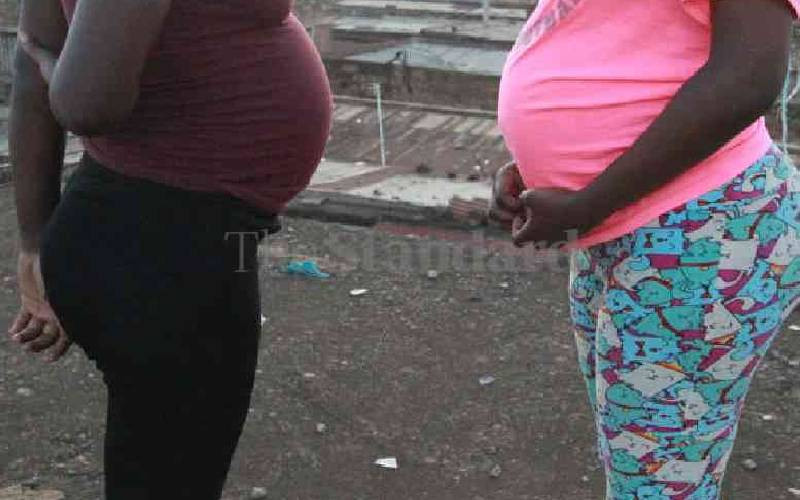
President William Ruto has directed the National Treasury to release an additional Sh10 billion to county governments to respond to floods caused by El Nino rains.
Another Sh10 billion was disbursed last week by the National Treasury to support devolved units in dealing with disaster situations.
The move by the head of state comes as the Met Department warns that rain is expected to continue in most parts of the country.
In a seven-day weather forecast valid from 21st to 27th November 2023, the forecast predicts that rainfall will persist over most parts of the country.
Isolated storms and heavy rains are expected over specific regions, including the Highlands East of the Rift Valley, the South-eastern lowlands, the Coast, and the North-eastern.
The Cabinet, in its preliminary assessment of the situation, notes that 38 out of the country's 47 counties are currently within the Alarm Stage, characterised by flash floods, general flooding in low-lying plains, rivers bursting their banks, landslides, and mudslides.
The consequences have been severe, with 76 lives lost and 35,000 households displaced.
- Dozens of cholera cases reported in flood-hit Kenya
- 17 cases of diarrhoea reported in Kilifi IDP camp
- Indian naval ship docks with relief food and medicine
- Woman gives birth to twins at rescue camp
Keep Reading
Dr David Gikungu, the Director of Meteorological Services, highlighted the likelihood of high average daytime (maximum) temperatures exceeding 30 degrees Celsius in some parts of the Coast, North-eastern, and North-western Kenya.
Additionally, these same areas are expected to experience moderate average night-time (minimum) temperatures ranging between 10 degrees Celsius and 20 degrees Celsius.
Conversely, some parts of the Highlands East of the Rift Valley are expected to encounter low average night-time (minimum) temperatures of less than 10 Degrees Celsius.
In an emergency session convened by President Ruto, the Cabinet unveiled a comprehensive set of measures to address the devastating impact of El Nino.
In response to the crisis, the Kenyan Defence Forces (KDF) and all public civilian aircraft will undergo enhanced deployment.
Their primary task will be to transport medical supplies, food, and non-food items for targeted distribution in the most affected areas.
The Cabinet also sanctioned the distribution of over 150,000 mosquito nets to the counties grappling with the aftermath of El Nino.
To address the economic fallout of the crisis. A proposal is set to be sent to Parliament for the replenishment of the Contingencies Fund and the rationalisation of the budget under Supplementary Appropriations.
Furthermore, the National Treasury has been directed to further rationalize the current budget and instruct Ministries, Departments, and Agencies (MDAs) to start reallocating funds in their budgets to support emergency response.
Emphasising the need for a rapid response, Cabinet members urged the scaling up of efforts to rehabilitate dilapidated road networks. This measure aims to facilitate the delivery of humanitarian assistance to affected populations in a timely manner.
To address the immediate needs of affected citizens, the State had allocated Sh7 billion, appropriated by Parliament under the Contingencies Fund budget and Supplementary Appropriations.
These resources will be applied to humanitarian response, including the distribution and supply of medical commodities, food and non-food items, rehabilitation of infrastructure, and resettlement of displaced families.
To support farmers who have been adversely affected, the Government has disbursed Sh500 to New KCC to mop up excess milk during this rainy season and airlift medical supplies worth Sh180 million by KDF to Wajir County.
In addition to financial support, the government is actively restoring damaged infrastructure. Airlift operations have been initiated to transport medical supplies to the most vulnerable counties.
Infrastructure restoration efforts include repairs to bridges and roads, such as the Mbogolo Bridge on the Mtwapa-Malindi Road, Jilango Centre on the Nuno-Modogashe Road, and Maadathe Centre on the Wajir-Mandera Road, among others.
The Cabinet has also directed the Ministry of Energy and Petroleum to prioritise the maximum production, uptake, and distribution of hydro-generated power.
This is expected to contribute to overall relief efforts, as hydro-generated power has increased to 20 per cent, while diesel has decreased from 15 per cent to 10 per cent.
 The Standard Group Plc is a multi-media organization with investments in media platforms spanning newspaper print
operations, television, radio broadcasting, digital and online services. The Standard Group is recognized as a
leading multi-media house in Kenya with a key influence in matters of national and international interest.
The Standard Group Plc is a multi-media organization with investments in media platforms spanning newspaper print
operations, television, radio broadcasting, digital and online services. The Standard Group is recognized as a
leading multi-media house in Kenya with a key influence in matters of national and international interest.











